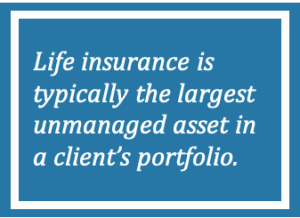See This Report about Pacific Prime
Table of ContentsThe Ultimate Guide To Pacific PrimeMore About Pacific PrimeAll about Pacific PrimeThe smart Trick of Pacific Prime That Nobody is Talking AboutThe 7-Minute Rule for Pacific Prime

This is because the information were gathered for a period of strong financial efficiency. Of the estimated 42 million individuals who were without insurance, almost concerning 420,000 (about 1 percent) were under 65 years of age, the age at which most Americans end up being qualified for Medicare; 32 million were adults between ages 18 and 65, around 19 percent of all adults in this age; and 10 million were youngsters under 18 years of age, about 13.9 percent of all kids (Mills, 2000).
These estimates of the variety of individuals uninsured are generated from the annual March Supplement to the Present Populace Study (CPS), performed by the Census Bureau. Unless otherwise kept in mind, nationwide quotes of individuals without medical insurance and percentages of the populace with different type of insurance coverage are based on the CPS, one of the most widely utilized source of quotes of insurance protection and uninsurance prices.
The Greatest Guide To Pacific Prime

Still, the CPS is specifically helpful since it produces yearly price quotes fairly promptly, reporting the previous year's insurance policy coverage estimates each September, and due to the fact that it is the basis for a regular set of quotes for greater than twenty years, enabling analysis of trends in insurance coverage over time. For these factors, along with the substantial use the CPS in other research studies of insurance protection that are provided in this report, we rely upon CPS estimates, with limitations kept in mind.

The estimate of the variety of without insurance people increases when a population's insurance condition is tracked for numerous years. Over a three-year period starting early in 1993, 72 million people, 29 percent of the united state populace, were without coverage for at least one month. Within a solitary year (1994 ), 53 million individuals experienced a minimum of a month without insurance coverage (Bennefield, 1998a)
6 out of every ten uninsured adults are themselves used. Functioning does enhance the possibility that one and one's household members will have insurance, it is not a warranty. Even participants of families with two permanent breadwinner have virtually a one-in-ten possibility of being without insurance (9.1 percent without insurance rate) (Hoffman and Pohl, 2000).
6 Simple Techniques For Pacific Prime
New immigrants represent a considerable percentage of people without medical insurance. One evaluation has actually associated a substantial part of the recent growth in the dimension of the united state without insurance population to immigrants go now who showed up in the nation in between 1994 and 1998 (Camarota and Edwards, 2000). Current immigrants (those that concerned the United States within the previous 4 years) do have a high price of being without insurance (46 percent), but they and their children represent simply 6 percent of those without insurance policy nationally (Holahan et al., 2001).
The relationship between medical insurance and access to care is well established, as documented later on in this phase. Although the partnership in between medical insurance and health and wellness end results is neither straight neither straightforward, an extensive professional and health solutions study literary works web links medical insurance protection to enhanced access to care, better quality, and enhanced individual and population health status.
Degrees of analysis for checking out the effects of uninsurance. It concentrates particularly on those without any kind of health insurance policy for any size of time.
All about Pacific Prime
The issues faced by the underinsured are in some aspects similar to those encountered by the without insurance, although they are typically less extreme. Health and wellness insurance coverage, however, is neither necessary neither sufficient to obtain accessibility to clinical solutions. The independent and straight effect of health and wellness insurance protection on accessibility to health solutions is well established.
Others will certainly obtain the healthcare they require even without health insurance policy, by spending for it out of pocket or seeking it from service providers that provide care totally free or at highly subsidized prices. For still others, medical insurance alone does not guarantee invoice of care as a result of other nonfinancial barriers, such as an absence of wellness treatment companies in their community, restricted accessibility to transport, illiteracy, or etymological and social differences.
Pacific Prime Things To Know Before You Get This
Formal research study concerning uninsured populations in the United States dates to the late 1920s and early 1930s when the Committee on the Expense of Medical Treatment generated a series of reports about financing physician office check outs and hospital stays. This concern came to be salient as the numbers of medically indigent climbed during the Great Depression.